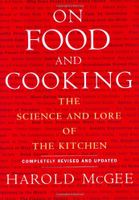Advertisement
Sour Cream
By Harold McGee
Published 2004
Sour cream is essentially a leaner, firmer, less versatile version of crème fraîche. At around 20% milk fat, it contains enough protein that cooking temperatures will curdle it. Unless it is used to enrich a dish just before serving, then, it will give a slightly grainy appearance and texture. Sour cream is especially prominent in central and eastern Europe, where it has traditionally been added to soups and stews (goulash, borscht). Immigrants brought a taste for it to American cities in the 19th century, and by the middle of the 20th it had become fully naturalized as a base for dips and salad dressings, a topping for baked potatoes, and an ingredient in cakes. American sour cream is heavier-bodied than the European original thanks to the practice of passing the cream through a homogenizer twice before culturing it. A small dose of rennet is sometimes added with the bacteria; this enzyme causes the casein proteins to coagulate into a firmer gel.


